 October 22, 2009 John E. Ross, KD8IDJ, Editor
| ||||||
+ Available on ARRL Audio News + Regulatory: FCC Issues Public Notice on Amateur Service Communication During Government Disaster Drills
The Public Notice -- DA 09-2259 -- affirms that the Commission's rules "specifically prohibit amateur stations from transmitting communications 'in which the station licensee or control operator has a pecuniary interest, including communications on behalf of an employer.'" ARRL Regulatory Information Manager Dan Henderson, N1ND, said that "This Public Notice is intended to clarify a difficult issue. A wide range of unofficial -- and frankly some incorrect -- interpretations have been offered on this topic in various public forums recently. DA 09-2259 is the official FCC notice on this issue. Though issued jointly by the Wireless Telecommunications Bureau (WTB), the Enforcement Bureau (EB) and the Public Safety and Homeland Security Bureau (PSHSB) under delegated authority from the Commission, the Notice makes it clear that WTB is the Bureau at the FCC with jurisdiction over the Amateur Radio Service rules and their interpretation." The Public Notice states that, in order to facilitate participation by employees who wish to engage in government-sponsored drills and emergency exercises on behalf of their employers, a waiver can be requested from the WTB by the government agency sponsoring the drill or exercise (and not by the individual who wishes to participate in the drill or exercise). The government entity conducting the drill must include in its waiver application the following information:
"It should be noted," Henderson said, "that the waiver request must be filed and acted upon in advance of the drill. The waiver must be actually granted by the Commission before the amateurs participate in the drill. It is not enough to apply -- the waiver must be granted first." Henderson added that the Public Notice also emphasizes that in an actual emergency, the Part 97 rules "provide that an amateur station may use any means of radiocommunication at its disposal to provide essential communication needs in connection with the immediate safety of human life and the immediate protection of property when normal communications systems are not available." In those specific circumstances, the rule waiver is not necessary. Government entities requesting a waiver for their emergency/disaster drill should submit a written request addressing the factors listed above to Wireless Telecommunications Bureau, 445 12th St SW, Washington, DC 20554, Attn: Scot Stone. A waiver is needed only for those licensees transmitting messages on behalf of their employer during the State and local government public safety agency's "occasionally conducted emergency preparedness or disaster drills test or drill." This may, after analysis, turn out to be very few licenses or, by rearranging functions of participants, a waiver may not be needed. The Commission has also emphasized that only governmental agencies may apply for a waiver. In September, the ARRL released guidelines that address numerous aspects of the issue of business communications in the Amateur Service. + Regulatory : ARRL General Counsel, Regulatory Information Manager to Present Webinar
ARRL General Counsel Chris Imlay, W3KD, and ARRL Regulatory Information Manager Dan Henderson N1ND, will present a webinar beginning at 9 PM EDT on Wednesday, October 28. This session will discuss the issues behind, and the reasoning for, the ARRL's recent report, The Commercialization of Amateur Radio: The Rules, The Risks, The Issues. According to webinar sponsor and host ARRL Atlantic Division Director Bill Edgar, N3LLR, all amateurs need to be aware of these issues. The webinar, available at no cost, is open to all amateurs. Please click here to register for this informative interactive Internet meeting. + Four Radio Amateurs Killed in Plane Crash En Route to CQWW Phone Contest
Just after take-off -- around 6:30 AM on Wednesday, October 21 -- a twin-engine plane carrying four Amateur Radio operators crashed into the woods, only 250 yards off the end of the runway in Jedburg, South Carolina, about 20 miles northwest of Charleston. The plane -- piloted and owned by Peter Radding, W2GJ -- carried Ed Steeble, K3IXD, Dallas Carter, W3PP, and Randy Hargenrader, K4QO. The four men were on their way to the Bahamas to operate in this weekend's CQ World Wide Phone Contest as C6APR, competing in the Multi/2 category. Radding, of North Charleston, South Carolina, was 69; Steeble, of Summerville, South Carolina was 68; Carter, of Laurel, Delaware, was 67 and Hargenrader, also of Summerville, was 55. All were ARRL members; Radding and Steeble were Life Members. Click here for more information. Robert Biss, W8ZA, of Harpers Ferry, West Virginia, accompanied Steeble, Carter and Radding to the Bahamas for the 2008 running of the CQWW SSB Contest. Click here for Biss' remembrances of his friends. + Advocacy: HR 2160 Gains More Cosponsors
+ International: IARU Administrative Council Adopts Preliminary WRC-12 Positions
Did You Know? WWV and WWVH Today, most amateurs know that radio stations WWV and WWVH broadcast time and frequency information 24 hours a day, seven days a week to millions of listeners worldwide. Administered by the National Institute of Standards and Technology (NIST), WWV is located in Fort Collins, Colorado, about 60 miles north of Denver; WWVH is located on the Island of Kauai, Hawaii on a 30 acre site near Kekaha at Kokole Point. Both stations broadcast information that includes time announcements, standard time intervals, standard frequencies, UT1 time corrections, a BCD time code, geophysical alerts, marine storm warnings and Global Positioning System (GPS) status reports. Most hams today think of WWV and WWVH as "time stations." According to QST Editor Steve Ford, WB8IMY, that's only half-true: they are really time and frequency stations. "The time signals that you hear are regulated by an atomic clock that uses the oscillations of Cesium atoms as its standard -- 9,162,361,770 oscillations equal 1 second," wrote Ford in the June 1994 issue of QST. Click here to discover this part of Amateur Radio history. International : IARU Officials Attend Region 3 Conference in New Zealand
+ International: ARRL HQ Hosts Amateur Radio Course for USTTI Participants
Students from Ghana, Mauritius, the Philippines, Sri Lanka and Zambia attended the United States Telecommunications Training Institute (USTTI) Amateur Radio Administration Course (ARAC) at ARRL Headquarters October 12-16. ARRL Technical Relations Manager Brennan Price, N4QX, coordinated the session and led the course. "The curriculum covered a wide variety of Amateur Radio topics and concerns, including licensing, spectrum requirements, disaster communications and antenna requirements," Price said. The curriculum also covered the ITU and its regulations, as well as the process leading to the next World Radiocommunication Conference 2012 (WRC-12). Click here for more information. + Historical: University Researchers Need Your Help as they Study Early Amateur Station Logs
Researchers at the University of Wisconsin and Miami University of Ohio are seeking copies of amateur station logs from 1913-1927 in hopes they may offer insights into the relationship between individuals' work and leisure activities, technology, and their social networks. "Early hams laid the foundation for today's use of technology for communications and entertainment," said Director of Engineering and Operations for Wisconsin Public Radio Steve Johnston, WD8DAS. "Many operators did not work in a technical field, but pursued Amateur Radio as a hobby for its own sake. This is a true success story about how a pastime can develop into an entirely new commercial and social phenomenon." Click here for more information on how you can help out with this study. Solar Update
This Week on the Radio
This week, look for an NCCC Sprint on October 23. The CQ Worldwide DX Contest (SSB), the CW and Digital runnings of the 10-10 International Fall Contest and the 50 MHz Fall Sprint are October 24-25. The SKCC Sprint is October 28. Next week, look for more runnings of the NCCC Sprint on October 30 and November 5. The High Speed Club CW Contest is November 1 and the ARS Spartan Sprint is November 3. All dates, unless otherwise stated, are UTC. See the ARRL Contest Branch page, the ARRL Contest Update and the WA7BNM Contest Calendar for more info. Looking for a Special Event station? Be sure to check out the ARRL Special Event Station Web page. + Amateur Radio in Space: SumbandilaSat Now OSCAR 67 The South African Amateur Radio satellite SumbandilaSat has been officially designated SumbandilaSat-OSCAR 67, or simply OSCAR 67. Last weekend, the satellite was successfully activated and tested with a number of contacts made through its transponder, but it is not yet open for routine use. The satellite was launched from the Baikonur Cosmodrome in Kazakhstan on September 17. The main payload is a multi-spectral imager, but the satellite also carries an Amateur Radio component consisting of a 2 meter/70 cm FM repeater. After SumbandilaSat is fully commissioned, the repeater will be activated with an uplink at 145.880 MHz and a downlink at 435.350 MHz; there will also be a voice beacon at 435.300 MHz. The transponder mode will be controlled by a CTCSS tone on the uplink frequency. SumbandilaSat was sponsored by the Department of Science and Technology and was built at SunSpace in cooperation with the Stellenbosch University. In addition to the SA-AMSAT amateur module, the satellite carries Stellenbosch University' s radiation experiment and software defined radio (SDR) project, an experiment from Nelson Mandela Metropolitan University and a VLF radio module from the University of KwaZulu-Natal. ARRL Continuing Education Course Registration
| ||||||
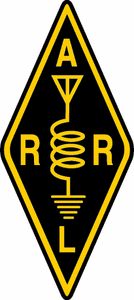 On October 20, 2009, the FCC released a Public Notice clarifying the Commission's rules relating to the use of Amateur Radio by licensed amateurs participating in drills and exercises on behalf of their employers. Entitled Amateur Service Communications During Government Disaster Drills, the Public Notice addresses participation by paid employees of organizations taking part in drills.
On October 20, 2009, the FCC released a Public Notice clarifying the Commission's rules relating to the use of Amateur Radio by licensed amateurs participating in drills and exercises on behalf of their employers. Entitled Amateur Service Communications During Government Disaster Drills, the Public Notice addresses participation by paid employees of organizations taking part in drills.
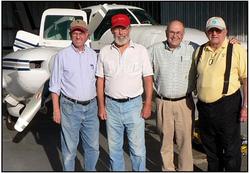
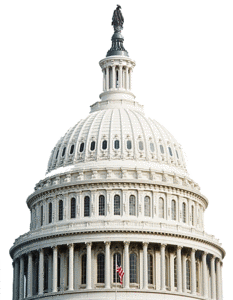 As of October 14, five more Congressional Representatives -- Tom Latham (R-IA-4), Dana Rohrabacher (R-CA-46), Scott Garrett (R-NJ-5), Candice Miller (R-MI-10) and John Olver (D-MA-1) -- pledged their support for
As of October 14, five more Congressional Representatives -- Tom Latham (R-IA-4), Dana Rohrabacher (R-CA-46), Scott Garrett (R-NJ-5), Candice Miller (R-MI-10) and John Olver (D-MA-1) -- pledged their support for 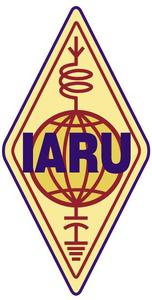 The Administrative Council (AC) of the International Amateur Radio Union (
The Administrative Council (AC) of the International Amateur Radio Union ( Hosted by the New Zealand Association of Radio Transmitters (NZART), officials from the International Amateur Radio Union (IARU) attended the IARU Region 3 14th Triennial Conference on October12-16, in Christchurch, New Zealand. Joel Harrison, W5ZN, ARRL President, represented the ARRL and ARRL Chief Executive Officer and former IARU Secretary David Sumner, K1ZZ, was also in attendance. Click
Hosted by the New Zealand Association of Radio Transmitters (NZART), officials from the International Amateur Radio Union (IARU) attended the IARU Region 3 14th Triennial Conference on October12-16, in Christchurch, New Zealand. Joel Harrison, W5ZN, ARRL President, represented the ARRL and ARRL Chief Executive Officer and former IARU Secretary David Sumner, K1ZZ, was also in attendance. Click 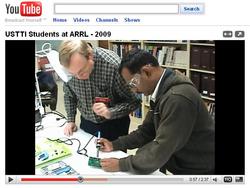

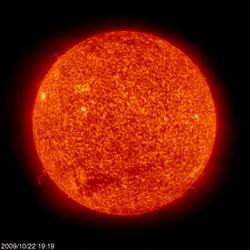 Tad "
Tad "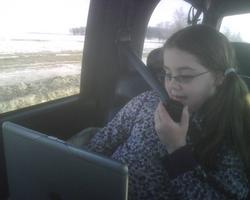
 Registration remains open through Sunday, October 25, 2009, for these online course sessions beginning on Friday, November 6, 2009: Amateur Radio Emergency Communications Level 1; Antenna Modeling; Radio Frequency Interference; Antenna Design and Construction; Ham Radio (Technician) License Course; Propagation; Analog Electronics, and Digital Electronics. To learn more, visit the
Registration remains open through Sunday, October 25, 2009, for these online course sessions beginning on Friday, November 6, 2009: Amateur Radio Emergency Communications Level 1; Antenna Modeling; Radio Frequency Interference; Antenna Design and Construction; Ham Radio (Technician) License Course; Propagation; Analog Electronics, and Digital Electronics. To learn more, visit the 







